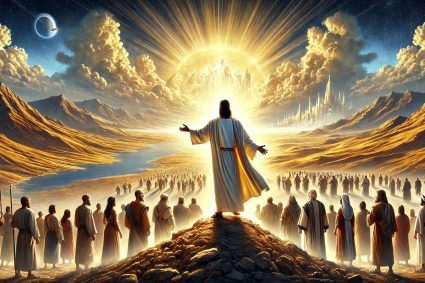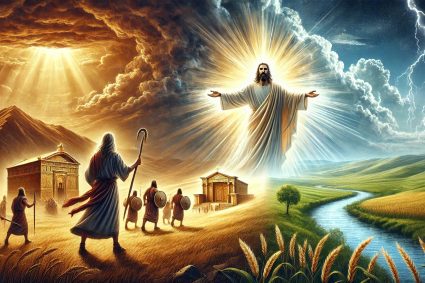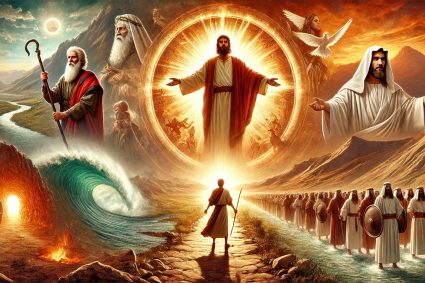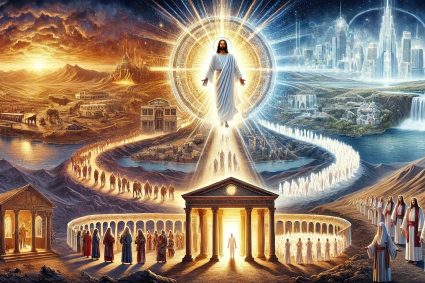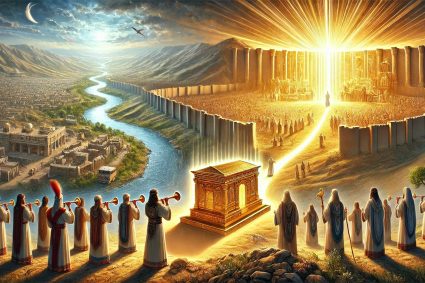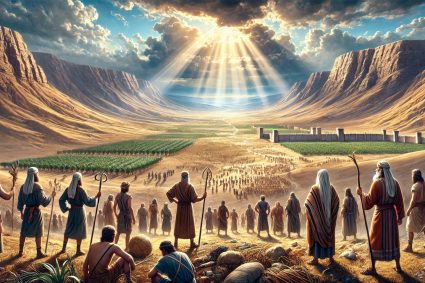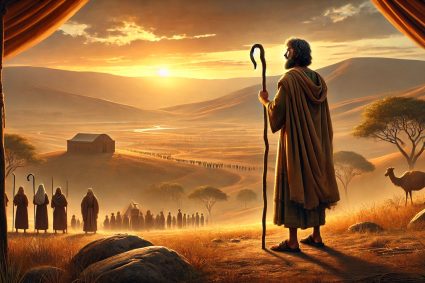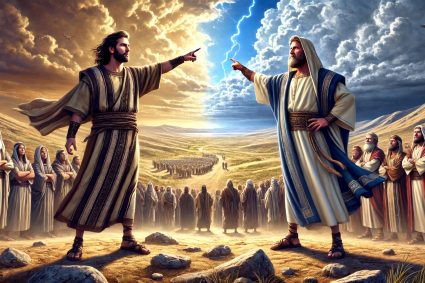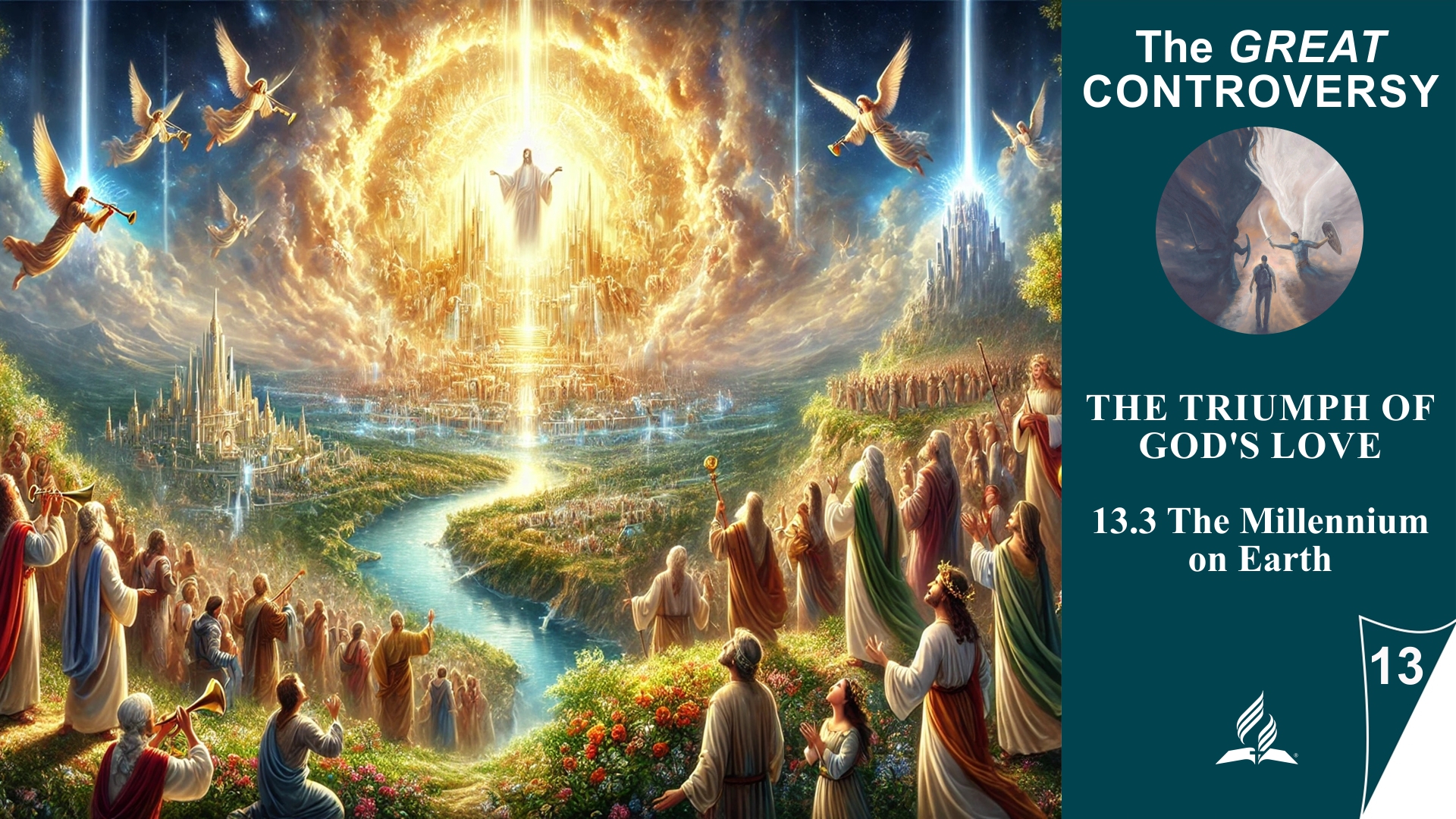

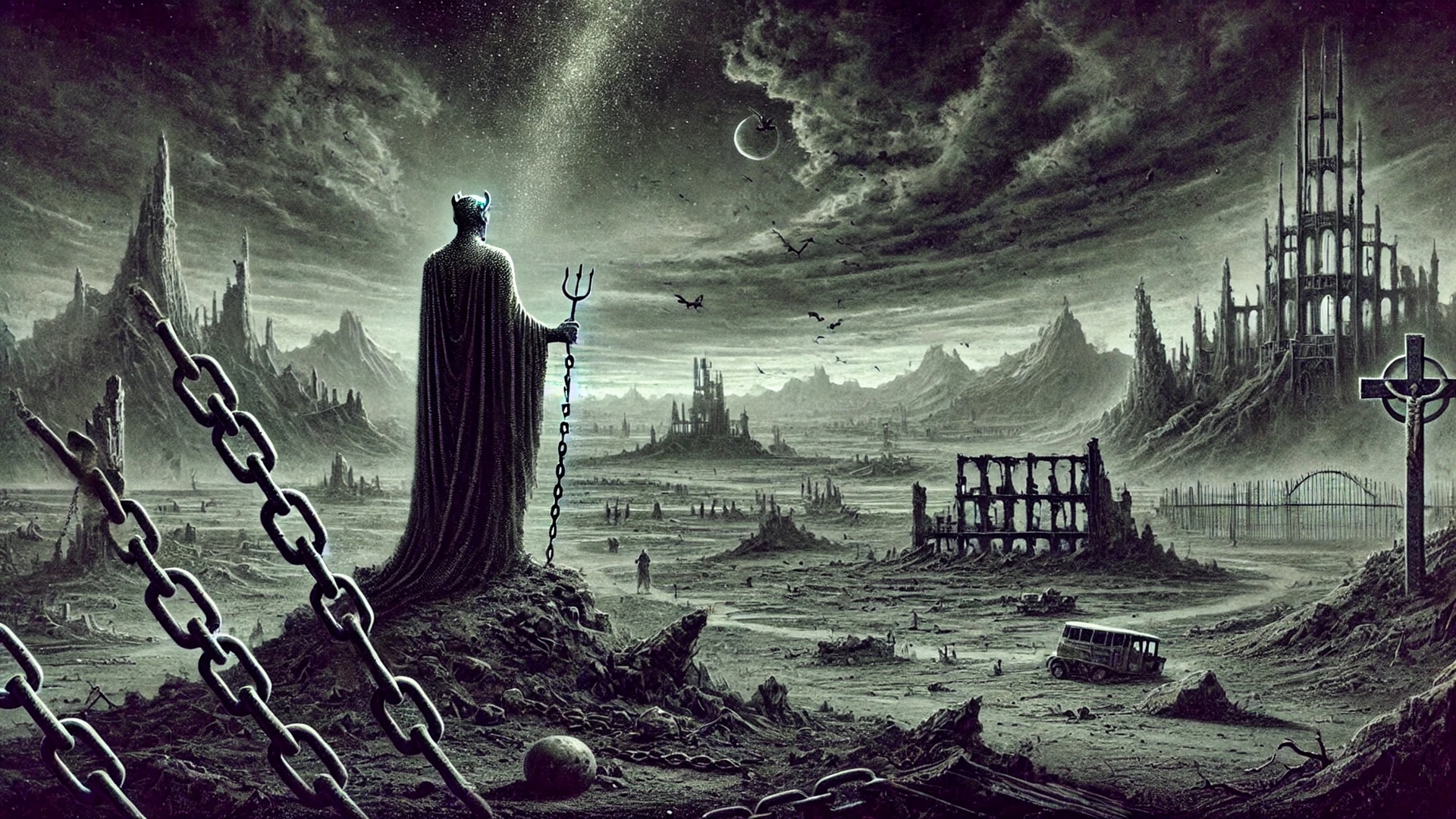
13.3 The Millennium on Earth
Satan’s Imprisonment and the Revelation of Divine Justice
Read Revelation 20:1-3. What is Satan’s fate when Jesus returns?
Revelation 20:1-3 reads: “And I saw an angel coming down out of heaven, having the key to the Abyss and holding in his hand a great chain. He seized the dragon, that ancient serpent, who is the devil, or Satan, and bound him for a thousand years. He threw him into the Abyss, and locked and sealed it over him, to keep him from deceiving the nations anymore until the thousand years were ended. After that, he must be set free for a short time.”
This passage symbolically describes Satan’s fate at the time of Jesus’ return. Satan is bound by the circumstances of his own creation—on a desolate and depopulated Earth. These chains are not literal iron chains but symbolize the conditions Satan himself has caused.
Symbolism of the “Chain” and the “Abyss”
-
The “Chain”: The chain binding Satan is a metaphor for the circumstances imposed on him. Since the Earth is depopulated and destroyed after Christ’s return, Satan has no one left to deceive. His power to deceive and tempt is restricted for these 1000 years.
-
The “Abyss” (Abyssos): The Greek word “abyssos,” translated as “Abyss,” is the same word used in the Septuagint to describe the Earth in its state before creation (Genesis 1:2). This “Abyss” symbolizes a desolate, chaotic, and dark Earth, similar to its condition before creation. It is not an underground cavern but the Earth itself, reduced to chaos by Satan’s work and Christ’s return.
Connection to 2 Peter 2:4 In 2 Peter 2:4, we read: “For if God did not spare angels when they sinned, but sent them to hell, putting them in chains of darkness to be held for judgment.” This describes how Satan and his angels are held in “chains of darkness,” meaning they must live under conditions that prevent them from continuing their evil works.
Satan’s Fate During the Millennium
-
Bound by Circumstances: Satan is forced to roam a desolate and destroyed Earth for 1000 years, the result of his rebellion and deception. He has no one left to deceive and must confront the consequences of his actions.
-
Reflection and Realization: During this time, Satan witnesses the devastation, destruction, and chaos his rebellion has caused. It is a time for him to reflect and recognize the extent of his destructive work.
Summary
The Millennium on Earth, as described in Revelation 20:1-3, reveals Satan’s fate after Christ’s return. He is bound on a desolate, depopulated Earth for 1000 years, constrained by the circumstances he created. This symbolic depiction emphasizes the consequences of rebellion against God and the ultimate justice of God. During this “chains of darkness” period, Satan is forced to contemplate the devastating effects of his deeds before the final judgment is executed.
Read Jeremiah 4:23-26 and 25:33. How do the biblical prophets describe this scene?
Jeremiah 4:23-26: “I looked at the earth, and it was formless and empty; and at the heavens, and their light was gone. I looked at the mountains, and they were quaking; all the hills were swaying. I looked, and there were no people; every bird in the sky had flown away. I looked, and the fruitful land was a desert; all its towns lay in ruins before the Lord, before his fierce anger.”
Jeremiah 25:33: “At that time those slain by the Lord will be everywhere—from one end of the earth to the other. They will not be mourned or gathered up or buried but will be like dung lying on the ground.”
These passages describe the catastrophic destruction and utter chaos that will engulf the Earth following Christ’s return. Jeremiah’s prophecy paints a grim picture of a world characterized by destruction, emptiness, and darkness. The mountains quake, the hills sway, and no human life is to be found. Cities are destroyed, and even the birds have fled the Earth. These images symbolize the total collapse of human civilization and a return to a state of disorder and abandonment.
Catastrophic Destruction at Christ’s Return:
-
Formless and Empty: Jeremiah 4:23 recalls the Earth’s state before creation, when it was “formless and empty.” This indicates that after Christ’s return, the Earth will be returned to a state of total devastation and emptiness.
-
Darkness and Earthquakes: The description of darkness and quaking mountains in Jeremiah 4:24 suggests a global catastrophe shaking the physical structure of the Earth.
-
Deserted Cities: Jeremiah 4:26 describes the complete destruction of cities and the absence of any life. This underscores the extent of the devastation.
During the Millennium:
The prophets emphasize that during this thousand-year period, no human will be left alive on Earth. Satan and his evil angels are left to witness the destruction caused by their rebellion. Jeremiah 25:33 describes that the dead will be scattered “from one end of the Earth to the other,” with no one to mourn, gather, or bury them. This highlights the total isolation and extent of the devastation.
Universal Realization of Sin’s Consequences:
-
The Wages of Sin: The total destruction and chaos on Earth make clear that “the wages of sin is death” (Romans 6:23). The entire universe will recognize the grave consequences of sin and rebellion.
-
God’s Handling of Sin: God addresses the problem of sin in three ways:
-
Revealing His Love: God shows His boundless love and tireless efforts to save all humanity.
-
Revealing His Justice: God reveals His justice, fairness, and righteousness in judging sin and rebellion.
-
Showing Sin’s Consequences: God allows the universe to see the ultimate consequences of sin and rebellion, leading to the final eradication of sin (Nahum 1:9).
-
Summary:
The biblical prophets Jeremiah 4:23-26 and 25:33 vividly describe the catastrophic destruction of the Earth at Christ’s return. These scenes highlight total devastation, the absence of human life, and an uninhabitable, desolate Earth that Satan and his angels will experience as a consequence of their rebellion. These prophetic images illustrate the serious consequences of sin and God’s justice in resolving the problem of sin once and for all to ensure it never arises again.
-
Recognizing the Consequences of Sin:
-
Reflection on Our Actions: Just as Satan is forced to contemplate the devastating effects of his deeds, we can reflect on how our decisions and actions affect others. It is important to be aware of the consequences of our behavior and strive to make positive impacts.
-
Taking Responsibility: Understanding the impact of sin and rebellion on our lives and surroundings motivates us to take responsibility for our actions and seek ways to do good and avoid harm.
-
-
Hope in God’s Justice and Love:
-
Divine Justice: The description of Satan’s imprisonment during the Millennium shows God’s justice and His ability to overcome evil. This gives us confidence that God will ultimately ensure justice, even when we experience injustice in our daily lives.
-
Divine Love: God’s efforts to save humanity and His boundless love, as described in the Bible, encourage us to trust His guidance and plan, even in difficult times. This love motivates us to act with love and mercy towards others.
-
-
Preparation for Christ’s Return:
-
Spiritual Growth: Knowledge of the imminent return of Christ and the Millennium should spur us to deepen our spiritual lives. Studying the Bible, prayer, and building a close relationship with God are crucial to remaining strong in times of trial.
-
Faithfulness and Steadfastness: God’s promises and the revelation of His plan motivate us to remain steadfast in faith, even when facing difficulties and persecution. We can be assured that God will ultimately conquer all evil.
-
-
Community and Support:
-
Strengthening Community: In light of the challenges and promises regarding the Millennium, it is important to foster a strong faith community. Shared prayer, Bible study, and mutual support help strengthen our faith and prepare us for Christ’s return.
-
Encouragement and Comfort: We should encourage and comfort one another, especially in times of distress. Knowing that God has a plan and His justice will prevail gives us hope and strength to support each other.
-
Summary:
The descriptions in Revelation 20:1-3 and the prophetic images in Jeremiah emphasize the serious consequences of sin and the ultimate justice of God. These insights have direct applications in our daily lives and faith. They motivate us to reflect on the consequences of our actions, trust in God’s justice and love, prepare spiritually, and strengthen our community. By integrating these principles into our lives, we can find hope and confidence amidst the challenges of this world and look forward to eternal fellowship with God.

The recognition of divine justice and love strengthens us to take responsibility for our actions and trust in God’s ultimate victory over evil with hope and confidence.
(Visited 22 times, 1 visits today)

